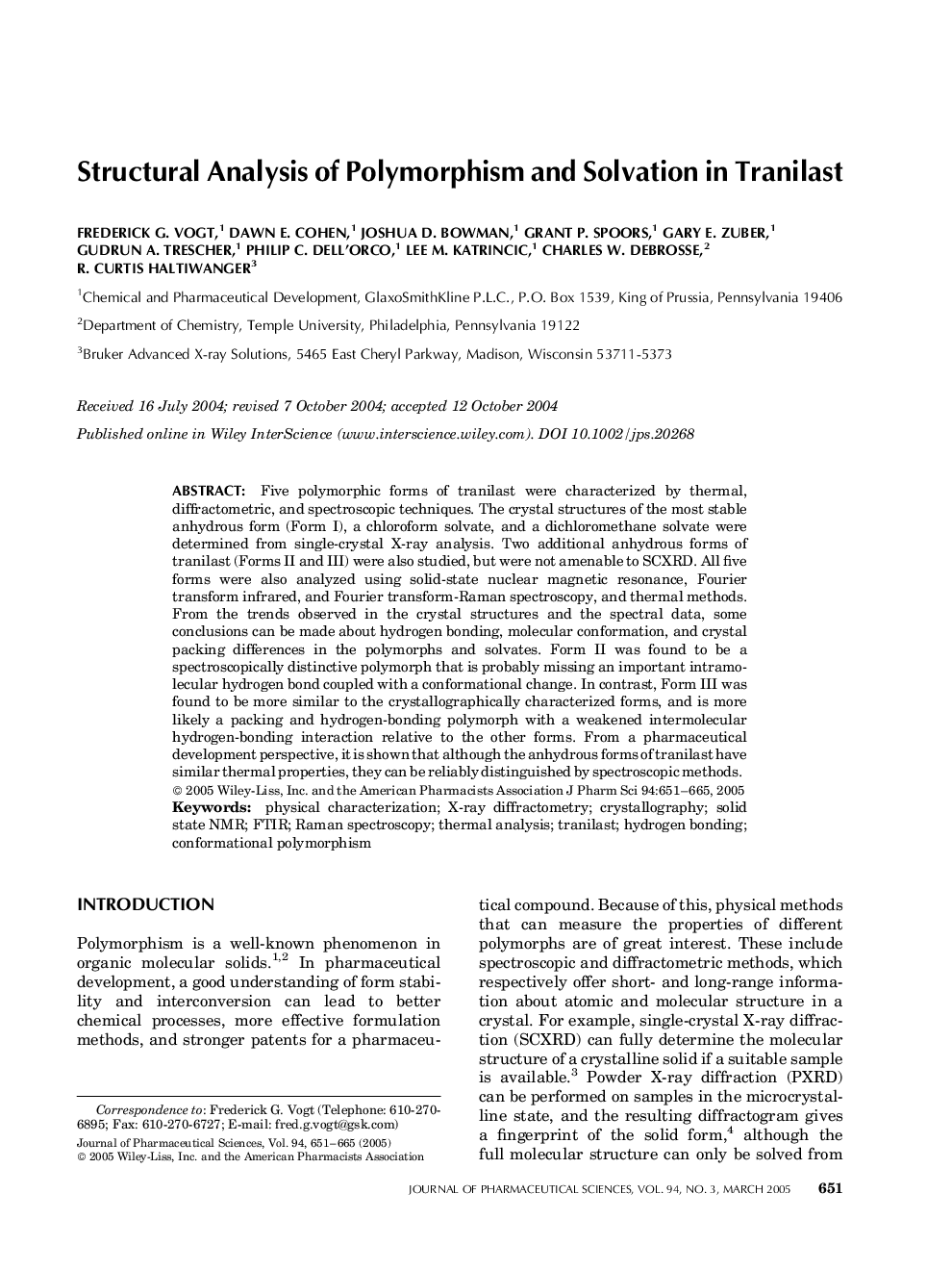| Article ID | Journal | Published Year | Pages | File Type |
|---|---|---|---|---|
| 8994343 | Journal of Pharmaceutical Sciences | 2005 | 15 Pages |
Abstract
Five polymorphic forms of tranilast were characterized by thermal, diffractometric, and spectroscopic techniques. The crystal structures of the most stable anhydrous form (Form I), a chloroform solvate, and a dichloromethane solvate were determined from singleâcrystal Xâray analysis. Two additional anhydrous forms of tranilast (Forms II and III) were also studied, but were not amenable to SCXRD. All five forms were also analyzed using solidâstate nuclear magnetic resonance, Fourier transform infrared, and Fourier transformâRaman spectroscopy, and thermal methods. From the trends observed in the crystal structures and the spectral data, some conclusions can be made about hydrogen bonding, molecular conformation, and crystal packing differences in the polymorphs and solvates. Form II was found to be a spectroscopically distinctive polymorph that is probably missing an important intramolecular hydrogen bond coupled with a conformational change. In contrast, Form III was found to be more similar to the crystallographically characterized forms, and is more likely a packing and hydrogenâbonding polymorph with a weakened intermolecular hydrogenâbonding interaction relative to the other forms. From a pharmaceutical development perspective, it is shown that although the anhydrous forms of tranilast have similar thermal properties, they can be reliably distinguished by spectroscopic methods. © 2005 WileyâLiss, Inc. and the American Pharmacists Association J Pharm Sci 94:651-665, 2005
Keywords
Related Topics
Health Sciences
Pharmacology, Toxicology and Pharmaceutical Science
Drug Discovery
Authors
Frederick G. Vogt, Dawn E. Cohen, Joshua D. Bowman, Grant P. Spoors, Gary E. Zuber, Gudrun A. Trescher, Philip C. Dell'Orco, Lee M. Katrincic, Charles W. Debrosse, R. Curtis Haltiwanger,
